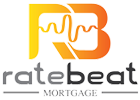
Purchasing Your First Home? Homebuying Lingo You Need To Know
Purchasing your first home is an exciting experience. But the process may seem stressful when you do not recognize the many acronyms and real estate specific terminology used by the real estate agent, loan officer, and in your mortgage documents. Therefore, it is crucial that you learn the basic real estate home buying lingo to help you feel confident, empowered, and not overwhelmed.
Here are some important home-buying acronyms to help you sound like a professional, as you navigate the home buying process.
APR (Annual Percentage Rate)
The Annual Percentage Rate or APR is the standardized method of calculating the total yearly costs of your mortgage which includes interest as well as other financial charges incurred over the life of the loan. It is designed to make it easier for consumers to compare lenders and costs associated with different loan options.
ARM (Adjustable Rate Mortgage)
An Adjustable Rate Mortgage or ARM means that it is a loan with an interest rate that adjusts periodically after staying at the same rate for a fixed amount of time (often five or seven years). ARMs usually begin with a lower initial interest rate during the initial period, which is sometimes even lower than a fixed-rate mortgage. Then it can either increase or decrease for the remaining term based on the specified index rate used for determination.
CD (Closing Disclosure)
The Closing Disclosure or CD is a five-page document provided to the buyer usually three days before closing. This document outlines all the final terms and costs of your mortgage like mortgage amount, your interest rate, monthly payment, mortgage insurance cost, monthly escrow amount, and other closing costs.
DTI (Debt to Income Ratio) Ratio
The Debt to Income Ratio or DTI Ratio is the percentage of your monthly gross income (income before taxes and other deductions are taken out) that goes towards paying your monthly debts. The lower your DTI the more likely that you will qualify for a mortgage with lower interest rates. The ideal DTI is 43%. You could also do your own DTI calculation by adding your monthly debt payments and then dividing it by your monthly pre-tax income. (Total monthly debt payments ÷ Gross monthly household income x 100)
FHA (Federal Housing Administration)
The Federal Housing Agency or FHA is an arm of the U.S Department of Housing and Urban Development (HUD) and endorses loan products. It sets standards for construction and underwriting of mortgage loans made by private lenders and banks. By ensuring qualifying residential mortgage loans it makes homeownership possible for a large number of people. However, it does not lend money.
FHLMC/Freddie Mac
The official title of Freddie Mac is Federal Home Loan Mortgage Corporation or FHLMC. It is a government-owned financial corporation that buys pools of mortgages and packages them into mortgage-backed securities. Freddie Mac, like Fannie Mae, does not work directly with the buyers. You must obtain the loan by working with a mortgage professional. The effect of these government agencies is to boost the housing market and provide access for more people to become homeowners.
LE (Loan Estimate)
The Loan Estimate or LE is a three-page document provided at the beginning of the mortgage process and shows a breakdown of the estimated costs you have to bring to the closing table. This breakdown includes costs like principal, interest, taxes, closing fees, insurance, and other fees associated with your loan. Remember to review the document carefully as when you sign the loan estimate you agree to the numbers you see and do not pay for something you did not sign up for.
LOX (Letter of Explanation)
The Letter of Explanation or LOX is a letter that is commonly requested by the mortgage lender or underwriter. It is used to explain or address something in your financial documents that may be considered a problem or an issue that you may not be aware of and complete your loan application process. This could include clarifying a glitch in your credit history, employment, or the source of a large deposit in your bank account.
LTV (Loan-to-Value) Ratio
The Loan-to-Value or LTV ratio is used to compare the loan amount you are taking to the appraised market value of the asset. Mortgage lenders use the LTV Ratio to determine the risk factor for loan approval or denial. It is also used to determine whether mortgage insurance is required. The ideal LTV is 80%. If you borrow more than 80% of the value of the home you are buying then you will have to get Private Mortgage Insurance or PMI , so that it mitigates the lender’s risk. This is an extra expense, but once your LTV is below 80% you can cancel the mortgage insurance.
PMI (Personal Mortgage Insurance)
Personal Mortgage Insurance or PMI is an extra amount of cash you need to pay every month in addition to your mortgage payments. It is usually required in a conventional loan if your down payment is less than 20% of the price of the home you are purchasing. This insurance protects the lender against loss if the borrower defaults.
PITI (Principal, Interest, Taxes, and Insurance)
The acronym for principal, interest, taxes, and insurance or PITI represents the four major expenses that make up your mortgage payment: principal (the amount borrowed), interest (interest on the mortgage), taxes (property), and insurance (homeowners’).
POC (Paid Outside of Closing)
These are the additional costs outside the normal fees that you are required to pay at the time of closing a loan and are not covered by the mortgage. They include the appraisal fee (if not paid by borrower before the closing) and the yield premium (the rebate the lender pays to the mortgage broker)
If you have any follow up questions about the above acronyms or wish to have our experts walk you through the home buying process contact us today at (877) 877 7575


